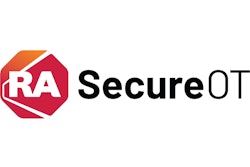
In today’s digital-first economy, security isn’t just a technical requirement — it’s a business enabler. The world runs on data, and supply chains are the backbone of business success.
For companies looking to partner with software vendors, data security and organizational resilience are not optional. Robust third-party risk management programs are essential, not only to protect sensitive information, but also to safeguard the integrity of the supply chain itself.
There are continuous integrations that take place across systems and services, so having secure solutions is now a requirement to do business. For the transportation industry, robust third-party risk management programs are designed to protect the supply chain, which is crucial to maintaining service integrity and ensuring that companies stay in business.
Whether you're onboarding a new vendor or evaluating an existing partner, here are three imperatives to keep in mind.
1. Compliance certifications count
When evaluating a third-party relationship, one of the first things to look for is compliance certification. It’s not just a checkbox — it’s a signal that due diligence has been done.
Compliance certification means a vendor has worked with an audit firm to get certified, which provides a level of trust and assurance. Depending on the market — whether international or domestic — different certifications carry different weight. Understanding your target market and working with a credible firm ensures that the accreditation reflects meaningful due diligence.
Pursue compliance certifications to ensure products are secure and customers’ data is protected. An SOC 2 report, a framework for assessing and reporting security measures, outlines administrative, physical and technical controls in place for products. This is used as a validation point to demonstrate a commitment to the cybersecurity of our partners.
2. Uptime is resilience
Resilience in the technology space is all about uptime and the ability to recover quickly when things go wrong.
It’s imperative to plan for worst-case scenarios like natural disasters, cybersecurity incidents or power outages that could disrupt services. Or a partner going out of business can have crippling ripple effects, especially if they’re a Tier 1 supplier. That’s why it’s critical to have a backup plan and build resilience into every layer of the supply chain.
Technology providers have found success using a third-party risk management platform that allows the engagement of partners through a self-service model. Depending on the available criteria, the system can automate approvals for low-risk vendors with supporting evidence — helping automate a potentially lengthy review process.
From the end-user level — such as truck drivers relying on connected services — to the underlying technology powering back-office systems, we work hard to understand what our customers use and identify potential failure points. Building a documented business continuity strategy ensures we’re prepared to get services back online quickly.
Trustworthy tech providers should also rely on threat intelligence platforms that scan public and deep web content to flag potential issues. These platforms trigger real-time alerts, allowing quick responses. Setting service-level agreements (SLAs) behind each level of severity can ensure timely action.
3. Use the zero trust model
“Zero trust” is more than a buzzword — it’s a foundational principle for secure access.
You don’t want every user to be an administrator, and you don’t want third parties to have unrestricted access to a software environment. Look for technology solutions that implement least privilege access and verify identities through trusted providers.
Single sign-on and multi-factor authentication are key. They ensure that users only access what they need for the time they need it and that they are who they claim to be. It’s about minimizing permissions and maximizing accountability.
Approximately 90% of breaches occur due to compromised credentials. Establishing secure access protocols is one of the most effective ways to prevent cyber incidents.
Zero trust starts on Day 1. When engaging with a new partner or vendor, vet them thoroughly to ensure that everyone accessing your systems and data is authorized. Apply due diligence, establish the zero-trust model upfront and maintain continuous monitoring throughout the relationship.
Looking ahead: Continuous monitoring and carrier guidance
Third-party risk management isn’t a one-time exercise. Technology evolves, and so do the vendors and partners the supply chain relies on. That’s why it’s important to revisit risk assessments on a biannual or annual basis.
The rapid adoption of AI is a prime example. Transportation companies are actively leveraging AI to analyze fleet data or to optimize operations in new ways. Understanding how your supply chain changes from a technology standpoint — not just a provider standpoint — is becoming increasingly important.
For carriers, the guidance is clear: start small and build smart. It’s important to map out your supply chain operations to ensure resiliency, and to document whether your team needs to build or update its business continuity plan. Begin with your most crucial services and partners and expand from there.


















